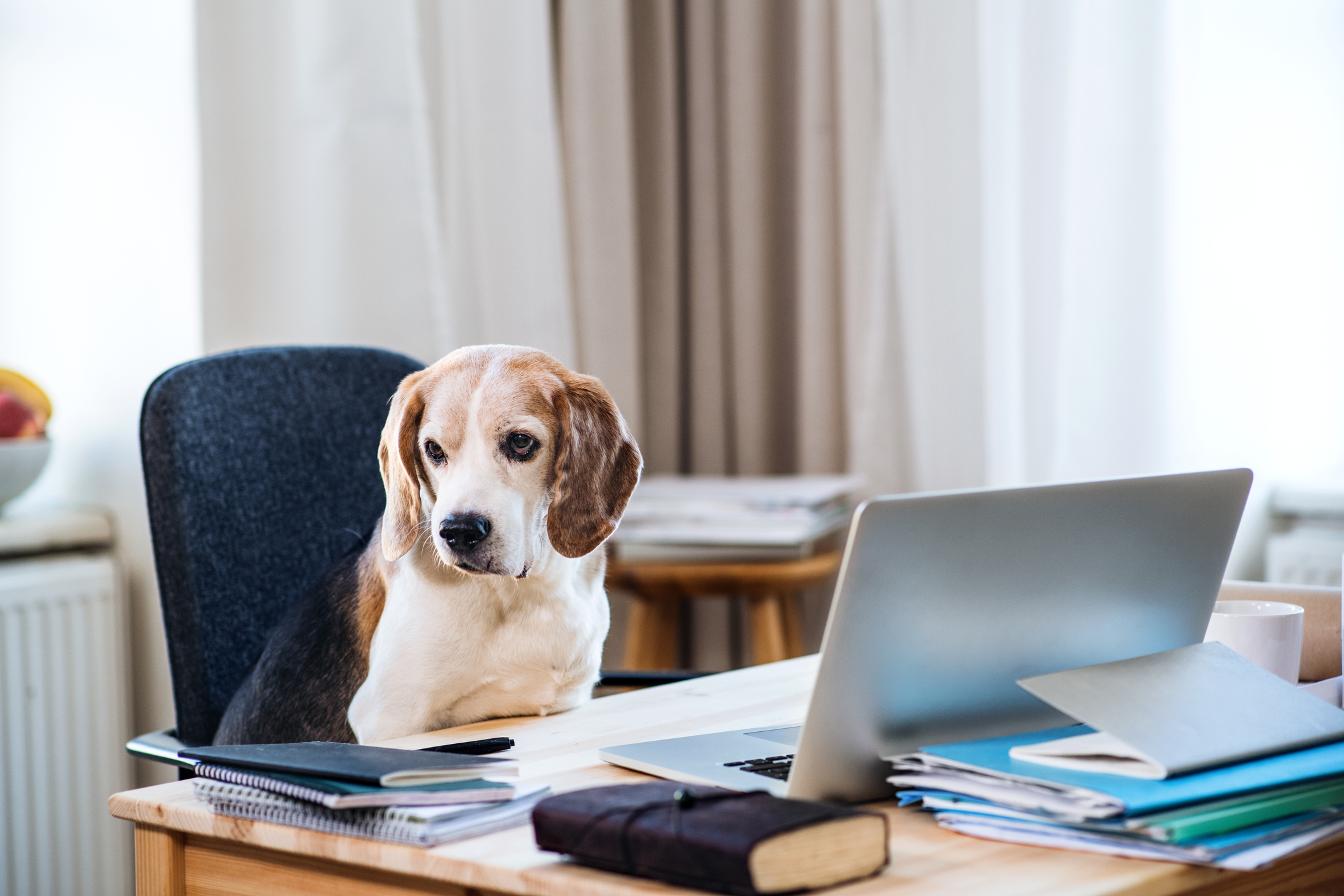If you are like most of the world, sheltering in place took on a new meaning because of the COVID pandemic. Though for our pets, the extra time with you is welcomed. But as we begin to trickle our way back to working in our offices, the shock of absence may impact them more than we realize. There are a few things that we can do to make the shift easier. Here are a few tips that might help the transition and decrease separation anxiety and unfavorable responses by the change in company.
1. Leave more often during the day as "D" day approaches.
As "Departure" day approaches, leave your space more frequently. If you need to run an errand or go for a walk, block out time away from the house to acclimate your pet to your more future permanent absence. If you are to report in person without much notice, consider using a few vacation half-days to build in a routine daily before implementing your original schedule.
2. Reestablish your old routine.
Remember that most animals, including our pets, are creatures of habit. Pets know when you are due home and what time you usually leave each day. Reestablishing your old routine a few days beforehand may be necessary. You can start by:
- Re-establishing your previous walk times
- Re-instituting normal feeding schedules
- Leaving for the day and placing a camera in the house to monitor for any signs of separation anxiety
3. Look for signs of stress and anxiety.
If your pet is more prone to being stressed out or anxious when you leave, watch out for using the bathroom in the house, destroying household items like blinds and furniture. Seeing these signs may warrant a call to a veterinarian or a telemedicine appointment with a behavioral expert. If you are pressed for time as we are all these days, consider increasing your pet's exercise to release stress hormones and increase endorphins, leading to longer napping times.
[Want more pet news? Visit our sister publication, petsradar.com]
4. Consider an in-home or daycare service.
If you can arrange for someone to come to your home to either sit with your pet or walk your animal as needed, this may be the best option to start. Some local daycare centers for animals may offer in-home services and drop off and pick up. An even better option would be to have a relative or loved one who may want to visit; coordinate the time where you will be out of the house so that there is some company at the start of your exit.
Are there any other side effects our pets experienced because of the COVID pandemic?
Just like us, our pets, our precious companions, had to shutter in for much of 2020. Because of this fact, many animals could not go to daycare, visit parks, and socialize with other animals since their owners were unable to socialize with people. Animals that were once used to going to dog parks now had to stay home and only have access to certain areas for exercise. Many dogs only saw other dogs from a socially appropriate human distance and could not interact, which decreased socialization skills.
Limited space to roam has also caused an increase in weight for not only people but also animals. Owners are known to drop food for their pets, which has led to an increase in pounds seen in our favorite companion. Limiting socialization has also led to more creative ways to socialize puppies. Instead of puppy training classes, owners have had to resort to other methods such as allowing their pets to walk on new surfaces, using a camera feature with a barking dog, or leaving the television on to simulate the outdoors. Still, the highlight of increased time at home with our pets included additional bonding time, napping, and snuggling.
Natalie Ragland, DVM is a guest contributor at Honest Paws.

